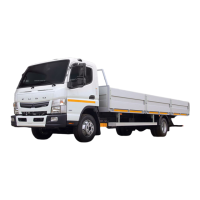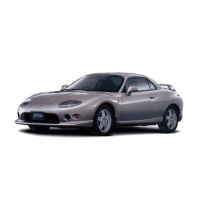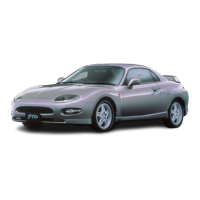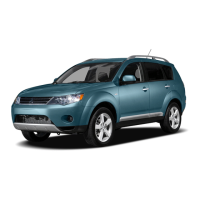12-66 Simple inspection and service
1 Inflation pressure check
•
Use an air pressure gauge to check for proper
tire inflation pressure.
If the pressure is incorrect, adjust it to the indi-
cated standard pressure.
• Tire pressure should be checked and adjusted
before driving when the tires are still cool. Make
sure that the tire air valve caps are securely fit-
ted.
Standard inflation pressure
• There is a plate affixed to the driver’s door pillar
indicating standard inflation pressure.
Tires – check
Inspection
intervals
At the time of pre-operational
check and every 30,000 km
(18,000 miles) or 12 months
Model Tire size
Inflation pressure
kPa (psi, kgf/cm
2
)
FEC5
LT215/85R16-10PR
(Load Range E)
550 (80, 5.5)
FEC7
FEC9
215/75R17.5 124/
123L (Load Range F)
690 (100, 7.0)
FG
LT235/85R16-10PR
(Load Range E)
550 (80, 5.5)
WARNING
• Excessively low or high tire pressures not
only give a poor ride but also could cause
cargo to be damaged. Under-inflated or
over-inflated tires are also very dangerous
and can be easily damaged. Moreover, if
the pressure is too low, tires could over-
heat and burst.
• Both the inner and outer tires on dual
wheels should be inflated to the same
pressure.
• You need not increase tire pressure before
high-speed driving.
• Tires should be handled with care due to
their high internal air pressure.
Z21588
Z21415
FE_FG.book Page 66 Tuesday, February 8, 2011 4:00 PM

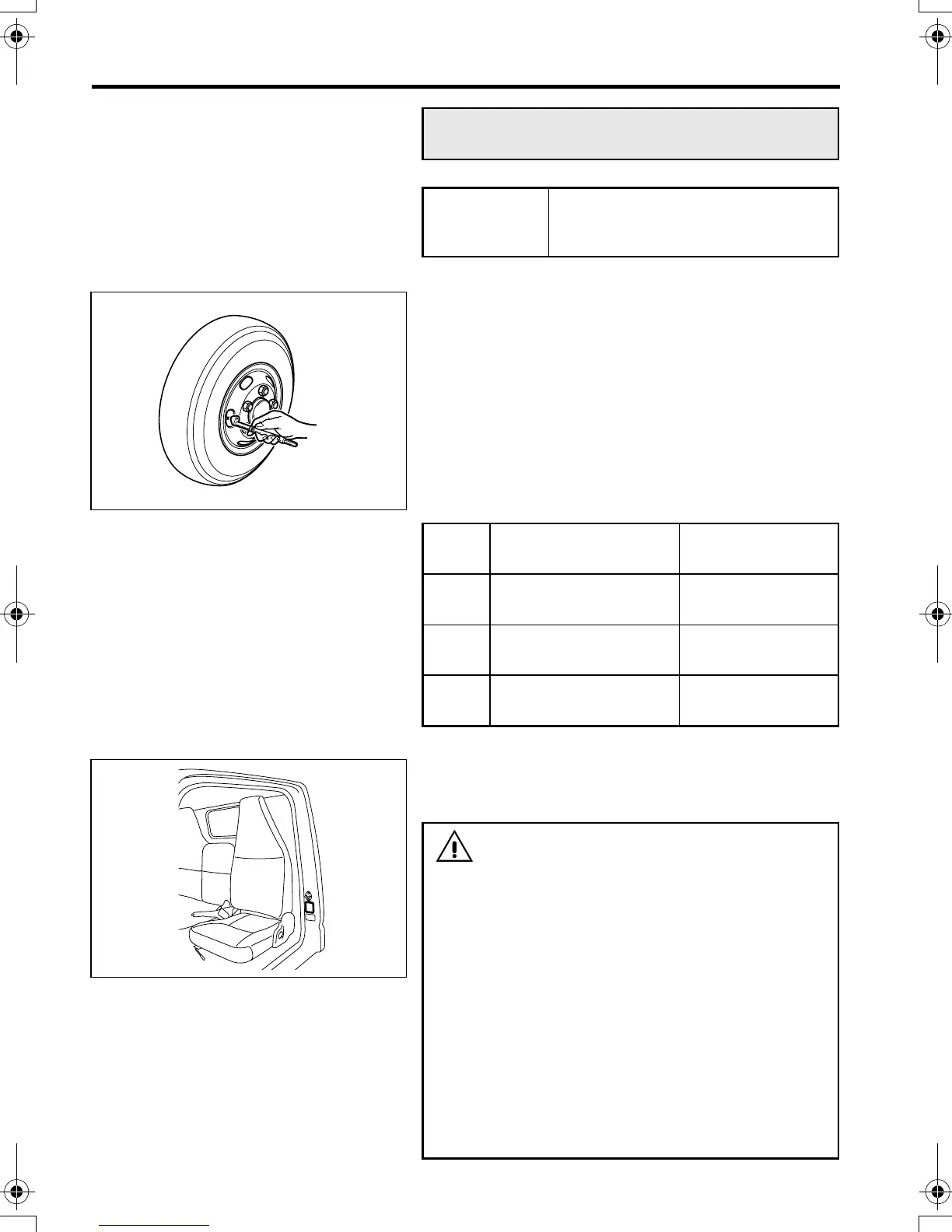